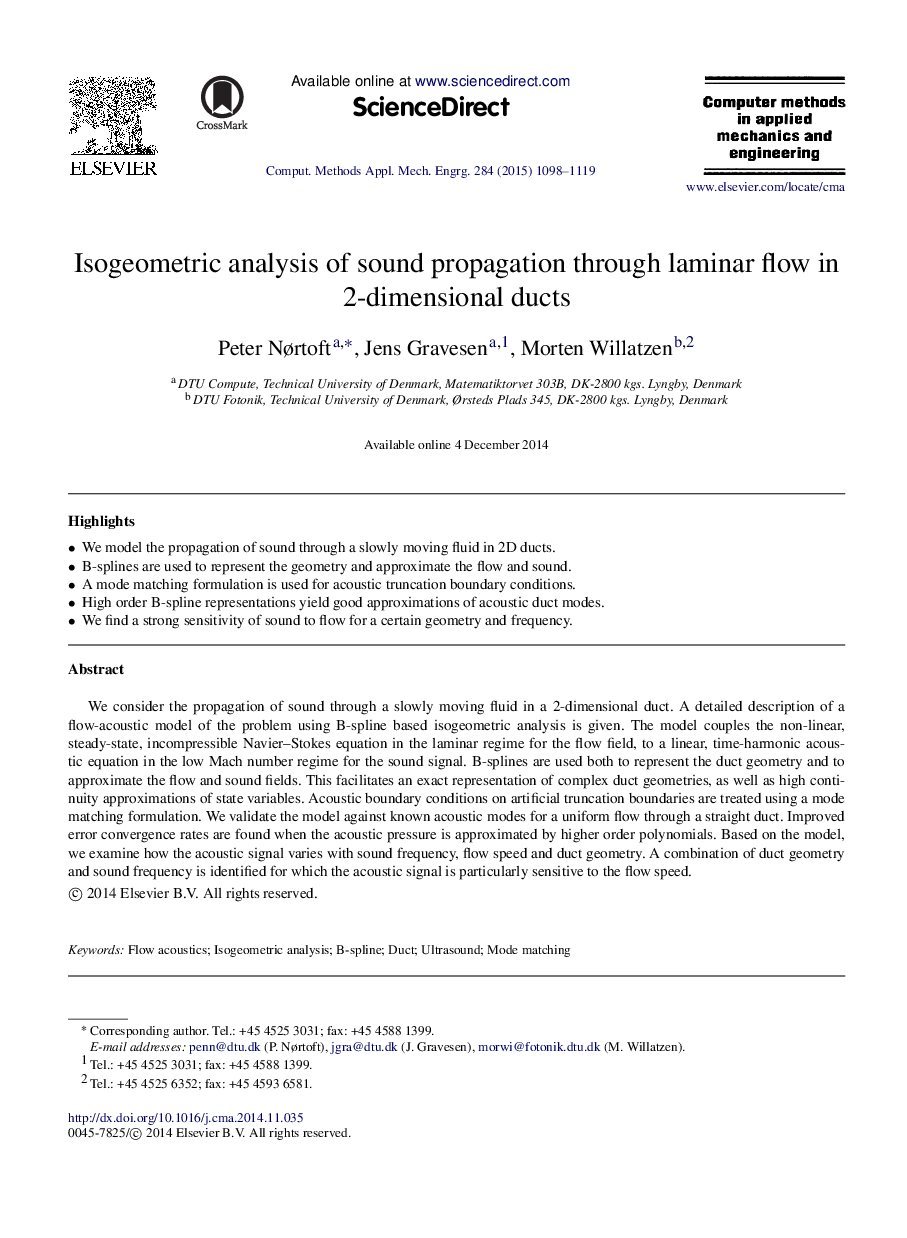| Article ID | Journal | Published Year | Pages | File Type |
|---|---|---|---|---|
| 497819 | Computer Methods in Applied Mechanics and Engineering | 2015 | 22 Pages |
•We model the propagation of sound through a slowly moving fluid in 2D ducts.•B-splines are used to represent the geometry and approximate the flow and sound.•A mode matching formulation is used for acoustic truncation boundary conditions.•High order B-spline representations yield good approximations of acoustic duct modes.•We find a strong sensitivity of sound to flow for a certain geometry and frequency.
We consider the propagation of sound through a slowly moving fluid in a 2-dimensional duct. A detailed description of a flow-acoustic model of the problem using B-spline based isogeometric analysis is given. The model couples the non-linear, steady-state, incompressible Navier–Stokes equation in the laminar regime for the flow field, to a linear, time-harmonic acoustic equation in the low Mach number regime for the sound signal. B-splines are used both to represent the duct geometry and to approximate the flow and sound fields. This facilitates an exact representation of complex duct geometries, as well as high continuity approximations of state variables. Acoustic boundary conditions on artificial truncation boundaries are treated using a mode matching formulation. We validate the model against known acoustic modes for a uniform flow through a straight duct. Improved error convergence rates are found when the acoustic pressure is approximated by higher order polynomials. Based on the model, we examine how the acoustic signal varies with sound frequency, flow speed and duct geometry. A combination of duct geometry and sound frequency is identified for which the acoustic signal is particularly sensitive to the flow speed.
